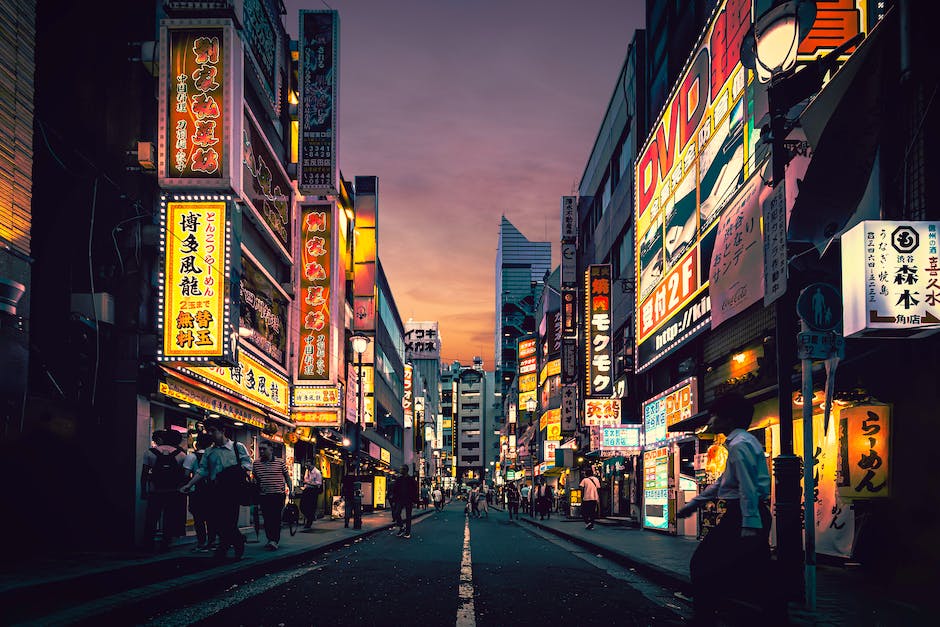10 Tips for Traveling to Japan on a Budget
Traveling to Japan can be an exciting and enriching experience, but it can also be quite expensive. However, with careful planning and budgeting, it is possible to explore this beautiful country without breaking the bank. Here are 10 tips for traveling to Japan on a budget.
1. Plan your trip during the off-peak season. Japan is known for its cherry blossoms in spring and vibrant autumn foliage, but these peak seasons can be crowded and expensive. Consider visiting during the shoulder seasons, such as late winter or early summer, when prices for accommodations and flights are generally lower.
2. Look for budget accommodations. While Japan is famous for its luxury hotels, there are also plenty of affordable options available. Consider staying in budget hotels, hostels, or even capsule hotels, which offer a unique and cost-effective experience.
3. Take advantage of public transportation. Japan has an extensive and efficient public transportation system, including trains, buses, and subways. Invest in a Japan Rail Pass, which offers unlimited travel on JR trains for a fixed period. This pass can save you a significant amount of money, especially if you plan to visit multiple cities.
4. Eat like a local. While dining in fancy restaurants can be tempting, it can also be expensive. Instead, try local street food, which is not only delicious but also affordable. Visit local markets and convenience stores, where you can find a wide variety of tasty and inexpensive meals.
5. Explore free attractions. Japan is home to numerous free attractions, such as parks, temples, and shrines. Take advantage of these opportunities to immerse yourself in Japanese culture and history without spending a dime. Some popular free attractions include Meiji Shrine in Tokyo and Fushimi Inari Taisha in Kyoto.
6. Take advantage of discount passes. Many cities in Japan offer discount passes for tourists, which provide unlimited access to various attractions and transportation within a specific area. These passes can save you money and make it easier to explore the city. Research and purchase these passes in advance to maximize your savings.
7. Shop at 100-yen stores. 100-yen stores, such as Daiso and Seria, are a budget traveler's paradise. These stores offer a wide range of products, from household items to souvenirs, all priced at 100 yen (approximately $1). Stock up on essentials and unique Japanese items without breaking the bank.
8. Stay connected with pocket Wi-Fi. Instead of relying on expensive international data plans, consider renting a pocket Wi-Fi device. These devices provide unlimited internet access and can be shared among multiple devices. Having internet access on the go will not only save you money but also make navigating Japan much easier.
9. Take advantage of free Wi-Fi. Many cities in Japan offer free Wi-Fi hotspots, especially in tourist areas. Take advantage of these free connections to stay connected and save on data usage. Just be sure to download offline maps and important information before leaving your accommodation.
10. Be mindful of your spending. Set a daily budget and stick to it. Keep track of your expenses and look for ways to save money, such as cooking your meals or opting for free activities. By being mindful of your spending, you can make the most of your budget and have a memorable trip to Japan.
In conclusion, traveling to Japan on a budget is possible with careful planning and smart choices. By following these 10 tips, you can explore this fascinating country without breaking the bank. Remember to be flexible, open-minded, and embrace the local culture to make the most of your budget-friendly adventure in Japan.
Exploring the Rich History of Japanese Cuisine

Exploring the Rich History of Japanese Cuisine
Japanese cuisine is renowned worldwide for its exquisite flavors, meticulous preparation, and artistic presentation. From sushi to ramen, tempura to yakitori, Japanese dishes have captivated the taste buds of people from all corners of the globe. But what many may not realize is that behind these delectable dishes lies a rich history that has shaped the culinary traditions of Japan.
The origins of Japanese cuisine can be traced back to the Jomon period, which began around 14,000 BCE. During this time, the people of Japan relied heavily on hunting, fishing, and gathering for their sustenance. They cooked their food by roasting or boiling it over an open fire, using simple techniques that allowed the natural flavors of the ingredients to shine through.
As Japan entered the Yayoi period around 300 BCE, the introduction of wet rice cultivation revolutionized the way food was prepared and consumed. Rice became the staple food of the Japanese diet, and the cultivation of other crops such as soybeans and wheat also began. With the advent of agriculture, new cooking methods such as steaming and fermenting were developed, giving rise to dishes like miso soup and soy sauce.
The influence of Buddhism in the 6th century CE brought about significant changes in Japanese cuisine. The religion's emphasis on vegetarianism led to the development of shojin ryori, a style of cooking that excludes meat and fish. Shojin ryori is characterized by its simplicity and use of seasonal ingredients, and it continues to be practiced in Buddhist temples across Japan to this day.
During the Edo period (1603-1868), Japan experienced a period of peace and stability, which allowed for the flourishing of arts and culture, including culinary arts. It was during this time that sushi, a dish that has become synonymous with Japanese cuisine, first emerged. Originally a street food, sushi was made by fermenting fish with rice and salt, a preservation method that allowed people to enjoy fish even when it was out of season.
In the Meiji period (1868-1912), Japan underwent a period of modernization and Westernization. This had a profound impact on Japanese cuisine, as new ingredients and cooking techniques from the West were introduced. Western-style bread, coffee, and meat dishes became increasingly popular, and Japanese chefs began incorporating these influences into their traditional dishes.
Today, Japanese cuisine continues to evolve and adapt to the changing tastes and preferences of the modern world. While traditional dishes like sushi and tempura remain beloved classics, innovative chefs are constantly pushing the boundaries of Japanese cuisine, experimenting with new flavors and techniques.
The rich history of Japanese cuisine is a testament to the country's deep appreciation for food and its commitment to preserving culinary traditions. From the simple yet flavorful dishes of the Jomon period to the intricate and delicate creations of modern-day sushi chefs, Japanese cuisine is a true reflection of the country's culture and heritage. So the next time you savor a piece of sushi or slurp a bowl of ramen, take a moment to appreciate the centuries of culinary mastery that have gone into creating these culinary delights.
The Ultimate Guide to Tokyo's Hidden Gems
Tokyo, the bustling capital city of Japan, is known for its vibrant cityscape, cutting-edge technology, and rich cultural heritage. While popular attractions like the Tokyo Tower and Shibuya Crossing are must-visit spots for tourists, there are also hidden gems scattered throughout the city that offer a unique and authentic experience. In this ultimate guide, we will take you on a journey to discover Tokyo's hidden gems, places that are off the beaten path but definitely worth exploring.
Our first stop is Yanaka, a charming neighborhood that has managed to retain its old-world charm amidst the modernity of Tokyo. As you stroll through the narrow streets of Yanaka, you'll be transported back in time with its traditional wooden houses, quaint shops, and tranquil temples. One of the highlights of this area is the Yanaka Cemetery, a peaceful resting place for many famous figures in Japanese history. Take a leisurely walk through the cemetery and admire the beautiful cherry blossoms in spring or the vibrant autumn foliage.
Next, we venture to Kagurazaka, a neighborhood that exudes a mix of traditional and modern vibes. Known as Tokyo's "Little Kyoto," Kagurazaka is famous for its narrow alleys, traditional Japanese houses, and a wide array of gourmet restaurants. Indulge in some authentic Japanese cuisine, from sushi and tempura to traditional tea houses serving matcha and wagashi (Japanese sweets). Don't forget to explore the Kagurazaka Slope, a picturesque street lined with charming shops and cafes.
Moving on, we arrive at Shimokitazawa, a trendy and bohemian neighborhood that is a haven for artists, musicians, and vintage lovers. This hipster paradise is filled with thrift stores, record shops, and small theaters showcasing indie performances. Spend a day exploring the vintage clothing stores, where you can find unique fashion pieces from different eras. In the evening, catch a live music performance at one of the intimate venues in Shimokitazawa and immerse yourself in the local music scene.
For nature enthusiasts, a visit to Todoroki Valley is a must. Located in the Setagaya ward, this hidden gem offers a peaceful escape from the hustle and bustle of the city. Follow the walking trail that winds through a lush green valley, passing by a small waterfall and a serene bamboo grove. The Todoroki Fudo Temple, nestled within the valley, is a tranquil spot for meditation and reflection. Take a moment to soak in the serenity of this hidden oasis in the heart of Tokyo.
Last but not least, we explore Nakameguro, a neighborhood famous for its picturesque cherry blossom-lined canal. During the sakura season, the canal becomes a popular spot for hanami (flower viewing) parties, with locals and tourists alike gathering to admire the blooming cherry blossoms. Nakameguro is also home to trendy cafes, stylish boutiques, and art galleries. Take a leisurely stroll along the canal, stopping by the various shops and cafes along the way.
In conclusion, Tokyo's hidden gems offer a different perspective of the city, allowing visitors to delve deeper into its rich culture and history. From the traditional streets of Yanaka to the bohemian vibes of Shimokitazawa, each neighborhood has its own unique charm. So, the next time you find yourself in Tokyo, be sure to venture off the beaten path and discover these hidden gems for an unforgettable experience.
- 185.63.l53.200 simon - October 25, 2025
- 185.63.l53.200 link - October 25, 2025
- apa itu plot twist - October 25, 2025





